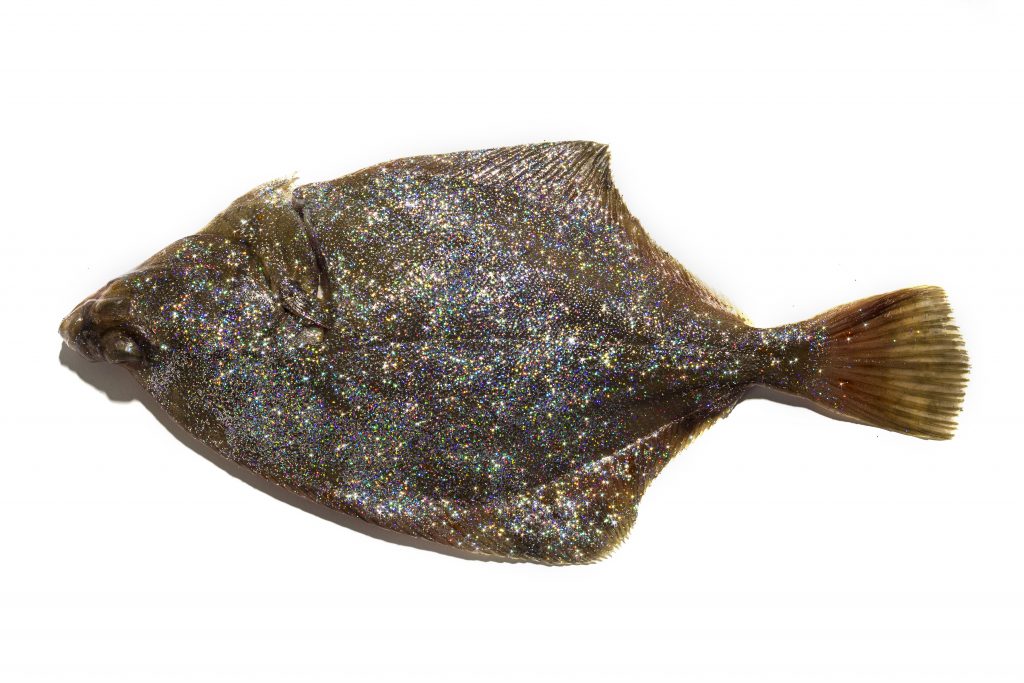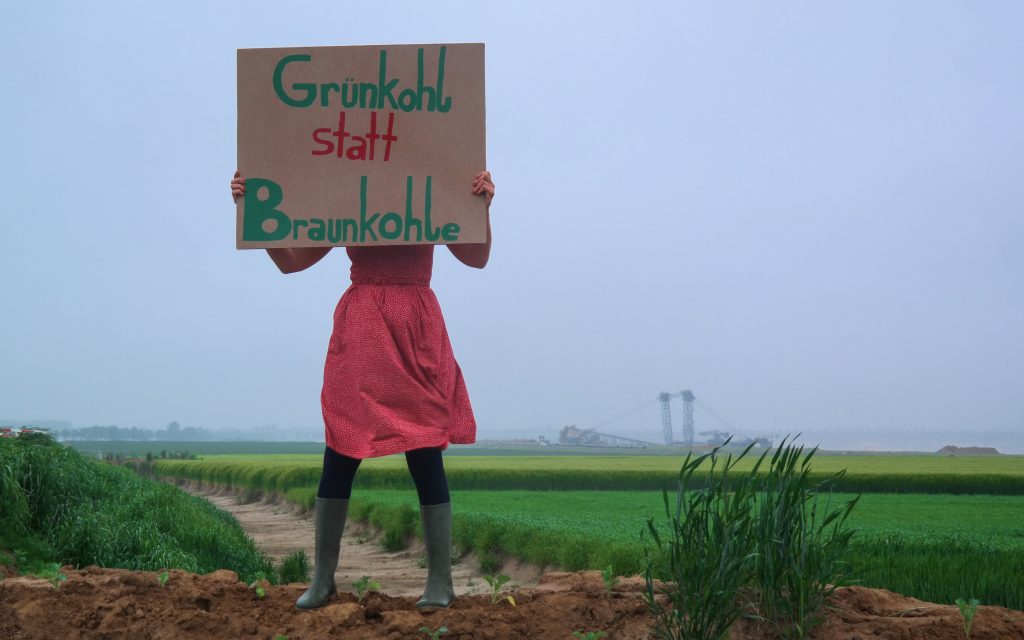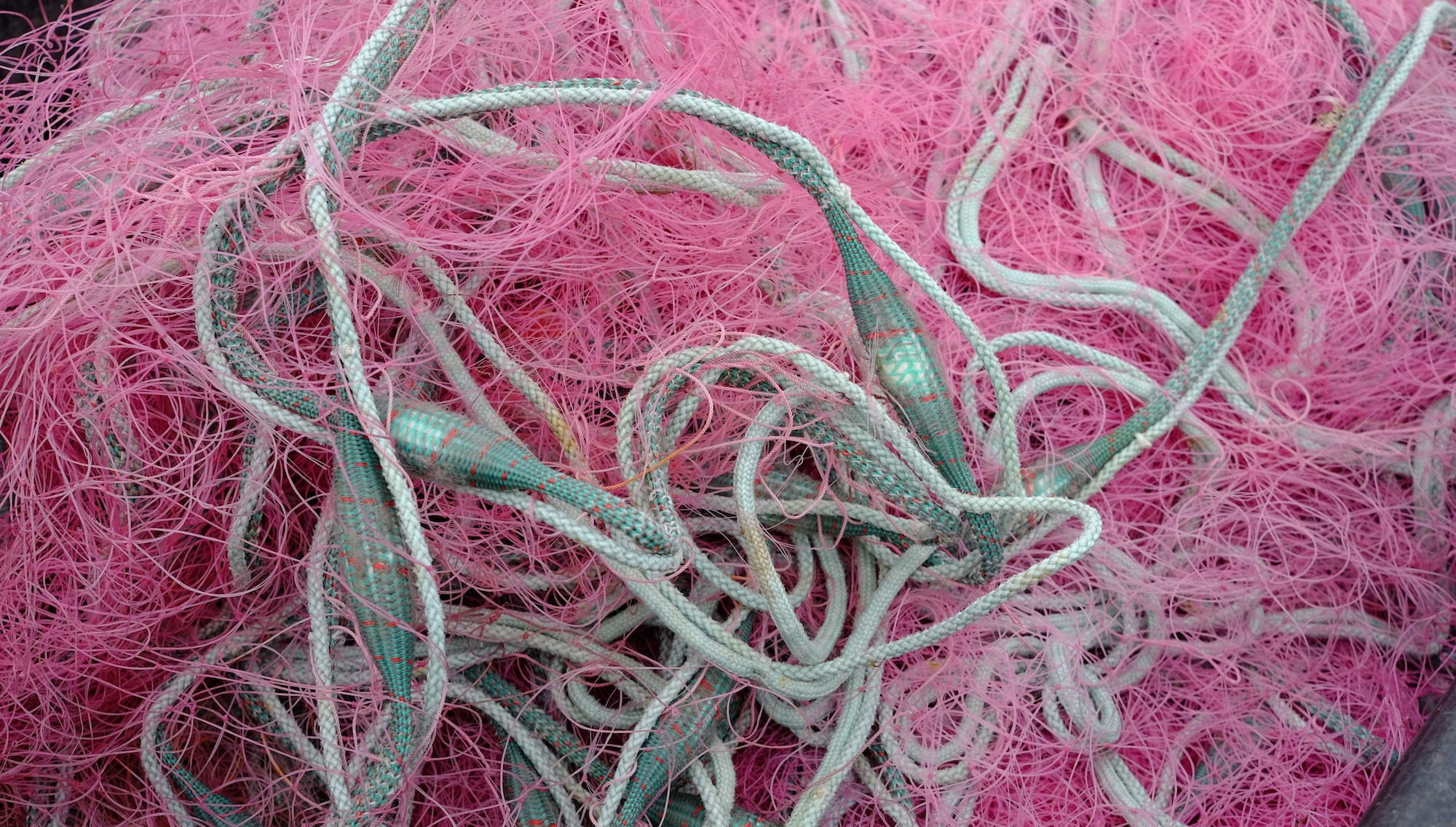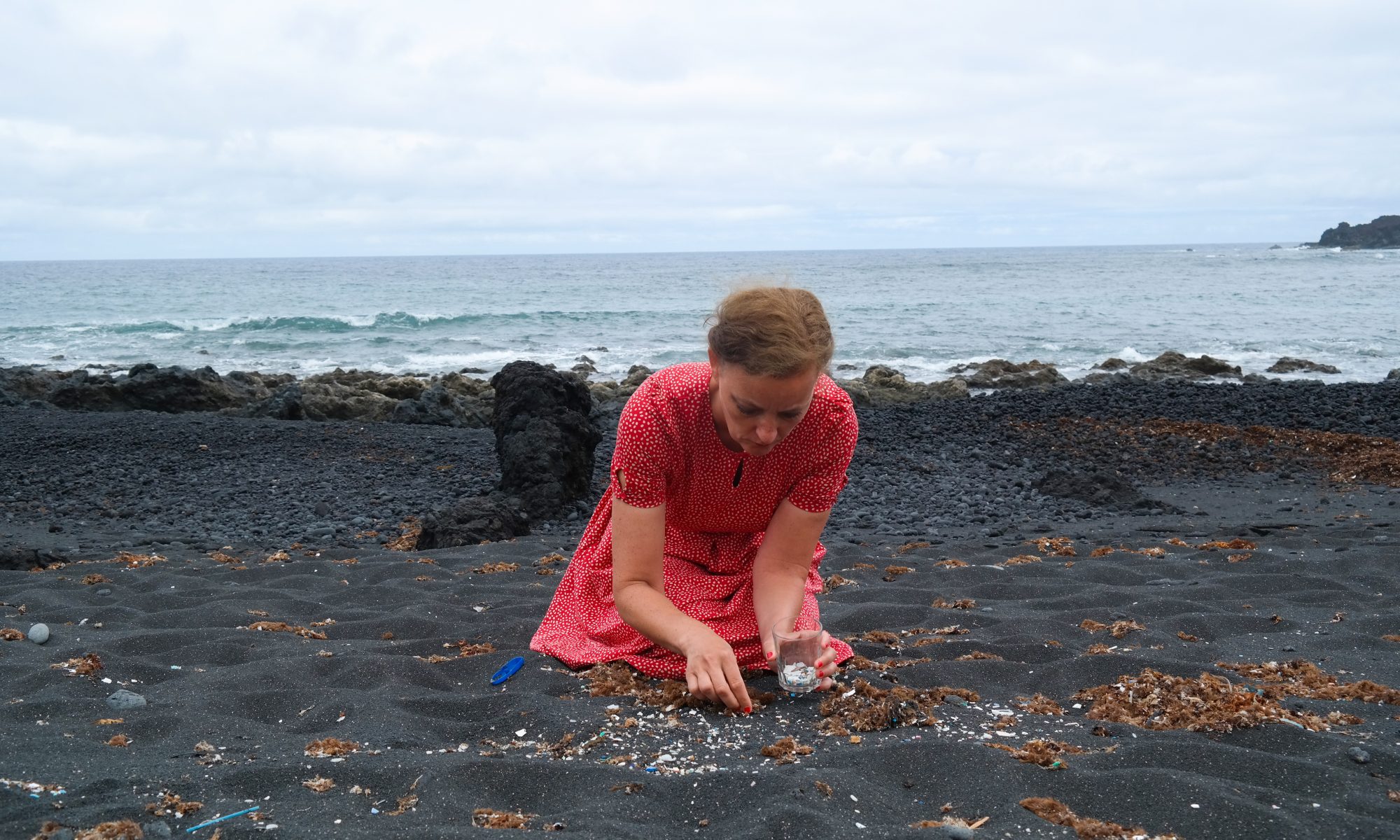Edited version of the article translated by Sebastian Smallshaw and published by Salzburg festival
Kamilo Beach is wild and beautiful. Shallow tide pools formed from black volcanic rock extend to the deep blue sea, while lush green vegetation hugs the white sandy beach at the southern tip of Hawaii’s Big Island. There are no tourists as far as the eye can see in this remote place.
Nonetheless, Kamilo has a worldwide reputation. The ‘plastic beach’ has become a symbol of the impact of human mass consumption. For as long as Hawaiians can remember, the sea has been washing up flotsam here. In the past, it used to be tree trunks, which the inhabitants could carve into canoes. Today it’s plastic garbage, which accumulates in the Pacific between California and Hawaii.
A few years ago, the marine biologist Megan Lamson from the Hawai’i Wildlife Fund took me to Kamilo. A dozen kids and adults from the islands were toiling under a mix of hot sun and brisk wind, as I went about collecting my soundbites for the radio with all kinds of plastic devices of my own. The beach cleaners filled bag after bag with faded, disintegrating plastic objects that had washed up on the beach.
If Megan and her helpers didn’t regularly free the beach of trash, it would be an ideal location for archaeologists of the future to study. What would a pale-blue disposable razor, a purple lighter, an almost intact car seat and a worn-out toothbrush reveal about our society?

A rotund, off-white mass, almost a metre wide, lay not far from the water. It was shot through with blue and green veins, the remnants of fishing nets, obviously burned. Such objects, in which the ocean-dumped waste of human civilization becomes fused with the environment, can be found again and again on Kamilo. They look like stones and even have their own name: plastiglomerates.
The calcium carbonate skeleton of a coral clung to a piece of old green pipe. According to the Kumulipo, a Hawaiian creation song, the coral polyp was the first creature to be created, as Donna Kahiwaokawailani Kahakui told us. The canoe paddler from Hawaii has set several records and came to the beach to share her knowledge of the sea and its importance with the youngsters.
We humans who were born during the last century will pass on much more to future generations than the consequences of unchecked plastic usage. Humanity has been rapidly transforming the planet since the 1950s and geologists are debating a new epoch: the Anthropocene. This term resonates with a responsibility that goes far beyond our current ability as a species to imagine, for what we do today will determine the conditions for life in the distant future.

The American microbiologist Linda Amaral-Zettler and her colleagues have discovered what they call the ‘plastisphere’: new and peculiar microbial ecosystems on the surface of small pieces of plastic from the ocean. While some of the organisms were lodged in small cavities, as if they had chiselled their way in, these pieces of plastic are occupied by potential pathogens as well. Some other organisms also benefit from the garbage. The oceanographer Miriam Goldstein has observed, for example, that a small water strider is successfully using microplastic in the Pacific as a place to reproduce.
May we fish the plastic out, if it has become a home for new life? In any case, trying to clean up the ocean is not only technically complicated, expensive and a risk to fragile, floating creatures — it also seems pretty futile. This is because only a tiny fraction of the plastic, maybe one percent, is suspected to be on the surface. The rest is probably circulating through the food chain, sitting heavily in the stomachs of plankton, fish, whales and turtles, and eventually sinking to deeper ocean layers, down to the creatures that dwell on the seabed.
It’s possible that some things are so small that they will be hard to find. The French chemist Alexandra ter Halle was able to verify the presence of nanoplastics in the open sea for the first time in the Atlantic in 2017. It’s still unclear what these incredibly small particles could mean for the health of human and marine life. Nanoplastics are in the same size-range as viruses. They can potentially pass through cell walls and membranes. It’s clear that plastic products contain a mix of chemicals and bind harmful substances that could have a toxic effect on living organisms.

Plastic can also be found in lakes, rivers, Arctic ice and high glaciers. Ecologists are investigating what nanoplastics and microplastics mean for the health of different kinds of soils and plants. New studies suggest that the wind can carry it over long distances through the air, and that it falls back to the ground along with snow and rain. While many people worry about microplastics in fish and seafood, a much larger amount probably lands directly on their plates via household dust.
Particle abrasion is common amongst a variety of plastics, from home textiles and synthetic clothing to paint and car tires. It’s even brought about by shoe soles and cosmetics. At the same time, it’s estimated that several million tonnes of larger plastic objects end up as garbage in the sea, much of which consists of disposable items and packaging. And the fishing industry loses nets and traps that go on endlessly catching marine life.
Despite these quantities, the plastic is spread thinly over the oceans, making it almost impossible to recover. It’s uncertain how long various plastics will be able to survive in the marine environment. There is talk of decades, centuries, sometimes even a thousand years. But most plastic is much too young to prove this for sure. And even biodegradable plastics often need very particular conditions, such as in an industrial composting plant, to be completely and quickly metabolized by microbes.

Plastics have become one of the pillars of modern society and are used today in all areas of life. Production has increased rapidly over a relatively short period of time, with the amount of plastic produced annually surpassing the combined weight of every human being on the planet. There has been little recycling. Instead plastic waste has been incinerated, dumped, exported or disposed of in natural environments. This is an enormous problem.
The terrible images of whales with stomachs full of plastic and beaches dotted with plastic confetti are the most visible part of the iceberg in terms of the problems that we face and will leave to future generations. The World Biodiversity Council reckons that of an estimated eight million animal and plant species, one million are in danger of extinction during the course of this century. This would be a loss of such existential proportions that it’s questionable whether human society and ecosystems would be able to withstand it. The causes of species extinction include the industrial exploitation of nature through agriculture and fishing, as well as pollution, invasive species and climate change.
The increasing amount of greenhouse gases in the atmosphere threatens the stability of the entire climate system and thus the conditions under which modern civilization emerged and developed. The oceans are facing manifold pressures, including increasing temperatures, acidification due to carbon dioxide, overfishing and pollution. ‘The ocean is dying of multiple organ failure’, explains Nikolaus Gelpke, editor of the magazine mare. A large part of the oxygen that we breathe is produced by marine life.
We are therefore moving towards the limits of what the planet can sustain, with many of these major environmental problems being interlinked. Invasive species can use plastic to get across oceans. Plastic waste puts an additional strain on some of the animals that are already threatened. In order to produce plastic, raw materials from fossil fuels are used, the burning of which also drives climate change. The Canadian oceanographer Sarah-Jeanne Royer discovered in tests carried out at the University of Hawaii that plastic products also emit small amounts of greenhouse gases.
At the same time, plastics can be found in wind turbines and solar panels needed for the transition towards renewable energy. Complex relationships like the one between plastic and climate are characteristic of the Anthropocene and contain dilemmas into which we humans have maneuvred ourselves in the wake of progress. It’s been known for decades where we’re heading. For younger generations, the situation will now become existential. If life expectancy continues to rise, many of today’s young people could live to the end of this century. In this sense, projections for 2100 by the Intergovernmental Panel on Climate Change don’t seem to them like the distant future.
‘I grew up in the 70s and 80s, and it was the time when pretty much everybody was convinced that when it comes to the protection of the environment, we were all messing it up. What people would tell us as children was, us adults, we have messed it up, so now it’s on you’, I’m told by Swaantje Güntzel, an artist who engages with plastic and waste in her performances and in the images she creates. As a child, she was barely able to deal with the burden of this topic. She experienced depression and tried to be an activist, but always felt small, alone and powerless.
She wasn’t the only one. ‘In the last weeks I talked to so many people from my generation, that told me that they went pretty much through the same back then in the 70s and 80s. They were sitting in their rooms in small towns and villages allover Germany, in that case, completely frustrated because people were telling them, you are the one who has to put up with all this responsibility right now, it’s all on you and you have to find ways to save the planet. And they were all sitting in their rooms thinking, how can I do that, how can I cope with this burden?’

What’s different today is that young activists now have a worldwide network through social media. They are no longer alone. ‘I think this is the reason why people of my generation feel so alleviated right now,’ said Güntzel, ‘that something is happening and that all this frustration, and pain, and anger, and feeling helpless is going somewhere – and this is why so many of them are supporting the cause.’
A movement that brings about a community, awareness and pressure can only be the beginning. Given the ever-dwindling timeframe that remains for us to halt climate change as well as the destruction of natural environments and resources, immediate and decisive action needs to be taken.
As adults, we cannot saddle our children with these problems and the challenge of solving them. There’s no time for that. We have to start right away and use every capability at our disposal to make the world a liveable place for the next 30, 70 and 150 years. This includes summoning up the courage to get to the root of these problems. We need to have serious discussions about how to free ourselves from the forces that compel us to extract the maximum from our planet.
Swaantje Güntzel and Jan Philip Scheibe collected illegal waste at Galerius Palace, an archeological site in the center of Thessaloniki (Greece). As part of their performance titled “Plastisphere Promenade”, they “relocated“ the trash to the city’s promenade. Video: Grigoris Tsolakis
Header: Artist Swaantje Güntzel clears a squaremeter of beach of microplastics in Lanzarote (Spain). During her intervention, she counted 1370 pieces. Image: Jan Philip Scheibe

